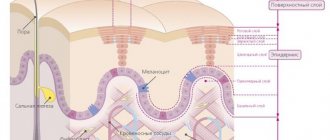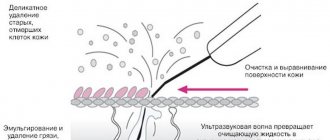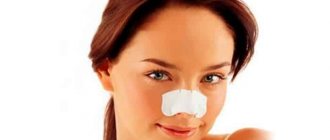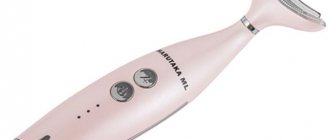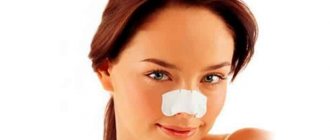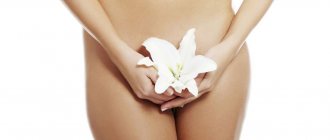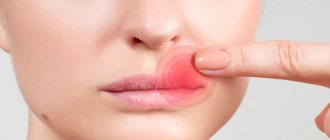In our age of great technology and high speeds, unfortunately, there are often moments when a person receives one or another injury. It is much more difficult if the injured part of the body is the head, and even more so, its facial part.
Since the human face is a very complex part of the body, surgeons have a great responsibility for correcting traumatic defects and deformities in this area.
So what needs to be done if something irreparable happens and someone, despite all attempts to correct the situation, still receives a facial injury. Firstly, do not panic; you need to seek help from a specialist, for example, the Center for Dentistry and Maxillofacial Surgery, as quickly as possible. At our Center, specialists have everything necessary to diagnose and treat various facial injuries, with the exception of serious concomitant and combined injuries, when the help of many specialists is required in an inpatient setting.
Despite the fact that injuries vary in complexity, we still recommend visiting an oral and maxillofacial surgeon to rule out the possibility of a more serious injury, such as an abrasion or hematoma.
So let's figure out what types of facial injuries there are.
Scarring
Healing of a granulating wound occurs through scarring and epithelization. At the final stage of healing, collagen fibers appear among the cells of the granulating tissue, the number of granules decreases, and the number of fibers increases. Ultimately, the fibrous substance passes into the connective tissue and forms a scar.
When wounds heal by primary intention, delicate scar tissue is formed, which tends to resolve.
In case of healing by secondary intention, a rough scar is formed, which will not be easy to get rid of.
How to quickly remove bruises on legs
First aid for a bruise on the leg is a cold compress. This can be done by soaking a cloth in water mixed with vinegar or alcohol. Due to rapid evaporation from the surface of the skin, they remove the tumor or prevent it from forming.
To avoid having to wait for the hematoma to heal, you need to lie down and raise your leg above the level of your heart. This will speed up the flow of blood from the limb and prevent it from swelling. Ointment with heparin, painkillers and troxevasin also effectively resolve the bruise.
There are hardware methods that help heal bruises. In cosmetology clinics they are treated with a laser. Irradiation of a tumor causes tissue heating and accelerates the breakdown of hemoglobin. You can remove a small hematoma at one time, but a large one will only change color. The disadvantage of this treatment is its high cost.
Types of wound healing
According to the classification of I.V. Davydkovsky, the following types of wound healing are distinguished:
- closing the defect of the epithelial cover, which occurs when the upper epithelial layer is damaged;
- healing under a scab, or healing without a scar. Observed on mucous membranes in case of minor defects.
- healing by primary intention, or healing without suppuration. Characteristic of wounds with damage to the skin and tissue underneath.
- healing by secondary intention, or healing through suppuration and granulation. Occurs with extensive wounds, accompanied by foreign objects entering the wound, tissue necrosis, microbes and infections.
Akriderm GK preparations for hand allergies
Depending on the form of the disease and the severity of the course, both ointment and Akriderm GK cream are used. They have a similar composition; the main difference is that the cream has a softer texture, so it is absorbed faster by the skin. It is more appropriate to use it for the treatment of acute and subacute conditions, as well as for weeping and thin areas of the skin. In turn, the ointment stays on the skin longer and has a high penetrating ability, therefore it is suitable for chronic inflammation accompanied by severe dryness and flaking.[10]
When Akriderm GK is applied to damaged skin, the preparations soften and cool the affected area, relieving itching and redness. The active substances not only improve symptoms, but also help eliminate pathogenic microorganisms. Thanks to the combined composition, which includes several active substances and auxiliary components, the treatment brings a noticeable and long-lasting effect.[11]
Stages of healing
The wound healing process goes through three main stages: inflammation, regeneration, and restoration of the epithelium.
The inflammation phase begins immediately after injury and in an uncomplicated state lasts for 4–5 days. During the hemostasis stage, platelets attach to sites of injury and cause a chemical reaction that activates fibrin, which forms a matrix network and binds platelets to each other. This is how blood clots form, blocking damaged blood vessels and stopping bleeding.
At the stage of proliferation and regeneration, the process of angiogenesis, collagen deposition, and the formation of granulation tissue (young connective tissue formed in places of defects) occurs. The regeneration stage can last 2–4 weeks depending on the size of the defect.
The final stage is the formation of the epithelium. Depending on the severity of the injury, the process can last from several weeks to a year or more.
Ways to get rid of bruises
Most often, the appearance of a bruise is preceded by a strong blow, which cannot be ignored. This injures small vessels, a small amount of blood flows out of them and permeates the subcutaneous tissue and lower layers of the skin. In response to injury, local swelling occurs - a protective reaction of the body. At this stage, the bruise is not yet visible, but you already need to take active action. The goal is to reduce tissue permeation with blood.
In order to quickly reduce swelling at the site of a bruise, it is necessary to use agents that cause vasospasm. Cooling with ice works well for this, but a frozen piece of meat wrapped in film and a thin towel will also work. It must be applied to the site of injury for 20 minutes. After cooling, the ice is removed, but the procedure can be repeated after 15-20 minutes. Constantly keeping the cold near the bruise is dangerous and can cause even more damage.
Home remedies can help relieve swelling. For this you can use:
- a compress made from a solution of vinegar or vodka;
- onion gruel with salt;
- applying a cut aloe leaf;
- half a raw potato.
Folk remedies against bruises can be used at an early stage, immediately after a bruise. A mixture of garlic and vinegar pulp and lavender essential oil, which should be applied to the injury site, are considered effective. But you need to be careful; minor bruises can be treated at home without the help of a doctor.
Wound treatment
The choice of wound treatment method largely depends on their type (infected or necrotic, wet exuding or fibrous granulating, trophic ulcers or bedsores). Only a doctor can choose the optimal solution for treating each type of wound.
In addition, at each stage of wound healing, it is necessary to use a different agent: one that promotes the removal of exudate, the formation of granulation tissue, accelerating epithelization, etc.
When treating wounds, you need to remember that the wound does not heal on its own, but thanks to the body’s resources aimed at healing it. The immune, endocrine, and circulatory systems are involved in this process. A qualified doctor, along with treating the wound itself, will definitely prescribe a vitamin complex to maintain the body.
Causes of allergic reactions on hands
The main triggering factor for the development of allergic dermatoses is single or regular contact with the pathogen. In this case, treatment is aimed at completely eliminating the allergen to which the body is hypersensitive. It is quite difficult to determine, but among the most common causes of hypersensitivity are antigens from plants, animals, fungi, insects, foods, chemical compounds and drugs.
Also, allergic reactions on the fingers and other parts of the upper extremities occur due to:
- Gastrointestinal diseases. Diseases such as biliary dyskinesia, chronic gastritis and pancreatic dysfunction can trigger the development of allergic dermatitis and contribute to its transition to a chronic form.[3]
- Violation of the barrier function of the skin under the influence of mechanical, chemical and infectious agents. A broken epidermal barrier facilitates the penetration of allergens through the skin, the development of infection, and causes mild skin irritation.[7]
- Unfavorable environmental conditions. High levels of environmental pollution lead to an increased susceptibility of the population to allergic dermatoses.[8]
- Genetically determined factors. If both parents are prone to allergic diseases, the likelihood of developing neurodermatitis and other allergic dermatoses in the child is 70%.[9]
How to speed up healing
The speed of wound healing varies. It depends on the nature of the injury and the individual characteristics of the patient, such as age, nutrition, and medications taken.
To speed up healing, it is necessary to provide optimal conditions for tissue regeneration at each stage. This role is fulfilled by therapeutic dressings designed for each stage of healing.
The method of hydrotherapy has a positive effect. Its essence consists in the sequential use of two dressings HydroClean and HydroTac. Using the first, the wound is cleaned, and then a second is applied, creating optimal conditions for granulation and epithelization.
Doctor's consultation: when is it necessary?
It is recommended to see a doctor, even if the wound does not seem serious. In addition, there are a number of cases when you cannot do without the help of a specialist. Such cases include:
- continued bleeding from the wound - it may be necessary to stop it by ligating the vessel, applying a suture, or using a hemostatic sponge;
- foreign bodies remaining in the wound, contamination;
- wounds caused by heavily contaminated, rusty, painted, grease-coated objects;
- wounds with signs of inflammation;
- wounds caused by animals;
- suspicion of a fracture, dislocation, ligament rupture.
In addition, it is not recommended to try to use certain medications on your own. The doctor prescribes an ointment for wound epithelization.
What to do if the wound does not heal
Non-healing or chronic are wounds that do not respond adequately to therapy despite prolonged treatment. Such wounds are usually caused not by external factors, but by reasons hidden inside the body, leading to disruption of metabolic processes and, as a consequence, disruption of the wound healing process. This category includes trophic ulcers, bedsores, and diabetic foot ulcers. Before using any dressings, consult a doctor: therapy and treatment of wounds can only be prescribed to you by a doctor!
For the treatment of chronic wounds, HARTMANN has developed a two-bandage system - HydroClean Plus and HydroTac.
The HydroClean Plus cleansing dressing can be used at all stages of wound healing, effectively removing necrotic tissue and pathogenic bacteria from the wound surface. They get caught in the absorbent layer and die under the influence of the antiseptic. The HydroTac dressing has absorbent and moisturizing properties and also protects the wound from secondary infection.
With the help of the hydrotherapy system, many patients have been able to significantly alleviate suffering and improve their quality of life.
How to quickly remove a bruise on your face
A black eye appears much faster than in other parts of the body. If measures are not taken quickly, the resorption of the bruise will take a long time. The reason is the location of the vessels and the loose subcutaneous tissue that surrounds the eyes. It easily becomes saturated with blood and swells.
First aid after injury is to apply ice to the face. Of the folk methods of struggle, it is necessary to use safe ones that will not irritate the mucous membrane of the eyes. Therefore, a paste of onion, vinegar or garlic will not work. But you can use:
- raw potatoes;
- parsley paste;
- a piece of raw pineapple (not canned);
- essential oils.
They are also treated with pharmaceuticals containing heparin, diclofenac and ibuprofen. Bruises on the face can be smeared with gel with troxevasin. It reduces swelling, pain, relieves inflammation, increases capillary tone and reduces their fragility. Troxevasin helps to quickly remove bruises and strengthen small blood vessels. It is recommended to use it 2-3 times a day.
If the bruise is large and does not want to dissolve, you can try to hide it with the help of cosmetics. Women apply a special color corrector to the defect on the face, which covers the blue tint, after which the skin is smoothed with foundation and powdered.
What is Fukortsin used for?
The pronounced antimicrobial effect allows Fukortsin to be used as a local antiseptic that fights potential infection of wounds and abrasions. In addition, the drug has a fungicidal effect, which means it can prevent the proliferation of fungus. The main purposes of Fukortsin are:
- purulent wounds;
- superficial damage to the skin;
- erosion;
- abrasion;
- deep cracks;
- fungal infection of the epidermis.
Diagnosed streptoderma is treated with the timely use of Fukortsin.
How to take Fukortsin for stomatitis
Stomatitis is an inflammation of the mucous membranes of the oral cavity, which is accompanied by the appearance of ulcers and abscesses. The disease usually occurs most often in children between one and three years of age. And this is due to the fact that during the period of teething, the child takes accessible objects into his mouth, some of which are unclean. Dirt entering the inflamed gum causes infection, which leads to the spread of ulcers throughout the oral cavity.
Adults, paying little attention to dental health, provoke the spread of infection. Stomatitis makes it impossible to eat normally, since any substances that get on the ulcer cause severe pain. Stomatitis is treated by rinsing with decoctions of chamomile or oak bark. And you need to treat wounds with Fukortsin, after moistening a cotton swab or swab in the solution.
Under no circumstances should Fukontsin be used as a mouth rinse. Tissues and mucous membranes have a high degree of absorption. During rinsing, a large percentage of boric acid and phenol will be absorbed into the blood, which will certainly cause general intoxication of the body
